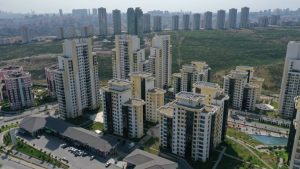Gfrc Grc Concrete Precast (Glass Fiber Reinforced Concrete)
Material called Gfrc Grc, means “Glassfibre Reinforced Concrete” or “Glass Fiber Reinforced Concrete”.
It is commonly called “precast” in our country, and it can also be expressed as “precast” as a word meaning.
In traditional concrete, reinforcement is done with steel. Gfrc /grc (precast) concrete elements contain alkali resistant glass fiber for reinforcement. In this way, flexibility and strength are provided to the concrete together.
Gfrc Grc Concrete Precast Components
Gfrc / Grc (precast) physical properties change with the chemical components added on. So, is formulated in the most appropriate way according to the purpose of use. It works in harmony with both static calculations and other related materials. There are 4 main components of Gfrc/Grc (precast). Main components are white portland cement, silica sand. Sand has to have more then 96% silica content. Other components are glass fiber and water. Glass fibre has to be with high alkali resistance (16.5% and above Zirconium content). Various plasticizers and chemical substances are also used. It is to provide the desired physical properties in project-based products.
Production Method
There are two basic production methods. These are the spray method and the premix method. In the spray system, the prepared concrete mortar is sprayed into moulds. Special spray guns are used for that purpose. The first layer is the layer called the mist layer (3-4mm thick). It creates the smooth surface of the material and does not contain fibers. After the production of the mist layer, alkali resistant (over 16.5% zirconium content) fiber is added to the spray machine. And the fiber is cut with special cutting tips during the spraying of the mixture and pulverized into the mixture.
Afterwards, the roll process is performed to eliminate the gaps in the concrete as much as possible. The distribution of the fibers that provide structural support to the Gfrc /Grc (precast) concrete. And that effects the strength of the concrete. For this reason, it is very important to carry out rolling after horizontal combing. Then vertical combing and continuing this cycle while spraying the fibrous mortar.
As given on GRCA web site, production in the spray system is made in the range of 10p to 18p. The thickness varies between 12-18 mm. Average thickness is in calculations of 15 mm.
The premix system is generally used in situations where physical strengths do not come to the fore. Purpose of using premix system to create decorative element. It is mainly used for concrete elements such as balustrad, buttress, sunshade.
Types of Molds Used in the Production of Gfrc Grc Concrete Precast Elements
The mold type is determined based on the type, production time, shape and number of the elements to be produced. Types of molds that are generally used: wooden, polyester and silicone molds. It is also known that selections can be made by considering mold efficiency. To shorten the production time, a solution is reached by increasing the number of molds.
Metal Connections
Gfrc Grc Concrete (precast) element carcass ensures the stability of the concrete elements. And it is connected to the concrete structural element with metal rods called pads. Especially, local increasing the thickness of the concrete material ensures that the material remains in the desired form. This is depending on the structure of the material to be produced,

